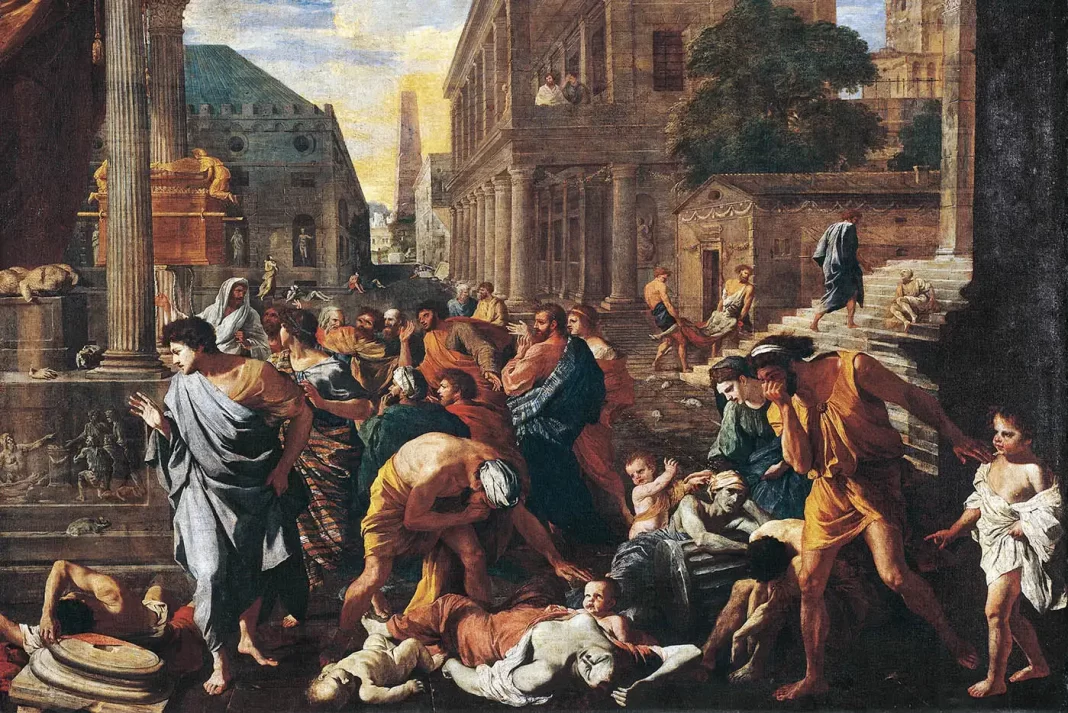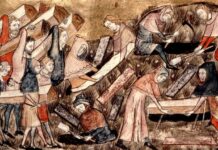The Plague of Justinian, also known as the Justinianic Plague, was one of the deadliest pandemics in human history, occurring during the reign of the Byzantine Emperor Justinian I in the 6th century AD. The Plague of Justinian Pandemic AD 541–549
Origins:
The exact origins of the Plague of Justinian are still debated among historians and scientists. It is widely believed to have been caused by the bacterium Yersinia pestis, which is also responsible for the Black Death of the 14th century. The plague likely originated in Central Asia or East Africa and spread along trade routes to the Mediterranean region.
Spread and Impact:
The Plague of Justinian first struck the Eastern Roman (Byzantine) Empire in 541 AD, during the reign of Emperor Justinian I. From there, it rapidly spread throughout the Mediterranean basin and beyond, reaching as far west as Gaul (modern-day France) and as far east as Persia (modern-day Iran).
The impact of the plague was devastating, with contemporary accounts describing scenes of death and despair in cities across the empire. It is estimated that the pandemic resulted in the deaths of tens of millions of people, perhaps as much as a third of the population of the Eastern Mediterranean region.
The social, economic, and political consequences of the Plague of Justinian were profound. Entire communities were decimated, and labor shortages led to economic disruptions and social upheaval. The Byzantine Empire, already weakened by wars and internal strife, struggled to cope with the scale of the pandemic’s devastation.
Symptoms:
The symptoms of the Plague of Justinian were similar to those of other bubonic plague outbreaks caused by Yersinia pestis. They included fever, chills, headache, weakness, and the development of painful, swollen lymph nodes called buboes. In severe cases, the infection could spread to the lungs, causing pneumonia and respiratory failure.
Spread:
The Plague of Justinian spread primarily through fleas that infested rats, which were common in densely populated urban areas. Fleas would bite infected rats, become carriers of the bacterium, and then transmit the disease to humans through their bites. Human-to-human transmission also occurred through respiratory droplets or direct contact with infected individuals.
The pandemic was facilitated by the extensive trade networks of the Byzantine Empire, which allowed the rapid spread of the disease along major trade routes and between urban centers. The crowded and unsanitary conditions of cities further contributed to the spread of the plague.
Legacy:
The Plague of Justinian had a lasting impact on the course of history and influenced the trajectory of the Byzantine Empire and the wider Mediterranean world. Some historians argue that the pandemic contributed to the decline of the Byzantine Empire by weakening its population, economy, and military strength.
The demographic consequences of the Plague of Justinian were profound, leading to depopulation, labor shortages, and changes in settlement patterns. The pandemic also had cultural and religious implications, inspiring works of literature, art, and theology that grappled with the existential questions raised by such widespread suffering and mortality.
The Plague of Justinian, one of the deadliest pandemics in human history, swept across various countries and regions of the Eastern Mediterranean basin during the 6th century AD. While historical records from this period are limited and specific death tolls by country are difficult to ascertain, we can provide a general overview of some of the most affected regions:
-
Byzantine Empire: The Byzantine Empire, centered in Constantinople (modern-day Istanbul), bore the brunt of the Plague of Justinian. The capital city and its surrounding regions experienced widespread devastation, with millions of deaths reported among the empire’s population.
-
Egypt: Egypt, a key province of the Byzantine Empire at the time, was severely affected by the plague. The densely populated cities of Alexandria and Memphis experienced high mortality rates, leading to significant depopulation and economic disruption.
-
Palestine: The region of Palestine, including cities such as Jerusalem, Gaza, and Jericho, suffered greatly during the pandemic. The plague’s impact on religious pilgrimage routes and holy sites had far-reaching consequences for the region’s social and religious fabric.
-
Syria: Syria, another important province of the Byzantine Empire, faced widespread outbreaks of the plague. Cities like Antioch and Damascus saw high mortality rates, contributing to social and economic instability in the region.
-
Asia Minor (Anatolia): The western and central regions of Asia Minor, corresponding to modern-day Turkey, experienced significant mortality during the Plague of Justinian. Cities such as Ephesus, Smyrna, and Nicomedia were heavily affected by the pandemic.
-
Greece: The Greek peninsula, including regions such as Attica, Boeotia, and Thessaly, suffered from outbreaks of the plague. The ancient city of Athens, already weakened by previous epidemics and wars, saw a further decline in population and prosperity.
-
Italy: While the plague is commonly associated with the Eastern Mediterranean, Italy also experienced outbreaks during the pandemic. Cities like Rome, Naples, and Ravenna reported significant mortality, contributing to the decline of the Western Roman Empire.
-
North Africa: The regions of North Africa, including provinces such as Libya, Tunisia, and Algeria, were affected by the plague. Cities like Carthage and Alexandria in Egypt experienced high death tolls, leading to social upheaval and economic decline.
-
Persia (Sassanian Empire): The neighboring Sassanian Empire, which ruled over modern-day Iran and parts of Iraq, also faced outbreaks of the plague. The ancient cities of Ctesiphon and Susa were among those affected by the pandemic.
-
Arabia: While specific data on the plague’s impact in Arabia are scarce, historical accounts suggest that the Arabian Peninsula was not immune to the pandemic. Trade routes linking Arabia to the Mediterranean likely facilitated the spread of the disease.
In conclusion, the Plague of Justinian was a catastrophic pandemic that reshaped the Eastern Mediterranean world and left a profound imprint on human history. Its impact was felt across social, economic, and political spheres, and its legacy continues to be studied and debated by scholars to this day.






